Click here Abu Dhabi, United Arab Emirates. For Valentine’s Day weekend, I traveled with my partner and his daughter from Abu Dhabi into the heart of the Musandam Peninsula, a piece of land which juts into the Strait of Hormuz, the narrow entry into the Persian Gulf. After an exquisite lunch of Arabian salad, fresh hummus/pita and mint tea at a Lebanese restaurant in Fajairah, we head to our destination for the night, a farm house we are renting from an Emirati couple in the village of Al Taiba, outside the town of Musafi.
We drive into the old part of the village, winding slowly down into what appears to be a verdant river valley, and stop at the house, recognizing the face of Zayed bin Sultan Al Nahyan (otherwise known as Sheikh Zayed, the founder and first President of the UAE) on stencilled onto the side of the house. We climb out of our little red Ford Spark, and are immediately greeted by our hosts, Hajer and Waliid, who present us with purple jasmine flowers as a welcome. Hajer works in the office of UAE Prime Minister Mohammed bin Rashid Al Maktoum(son to Sheikh Zayed), and Waliid is an engineer working for the United Arab Emirates Air Force in Dubai.
Waliid and Hajer show us the farmhouse. It’s stunning, and huge. There is a private walled courtyard with bougainvillea, a large room with thirty foot ceilings and ornately decorated couches and carpets, two bedrooms, and two bathrooms. There is a rooftop terrace, with more brightly colored couches and carpets, from which we can see the rest of the old village and hear an exquisite evening call to prayer that richochets around the canyon (you can listen to a snippet, here). to edit.
We drive into the old part of the village, winding slowly down into what appears to be a verdant river valley, and stop at the house, recognizing the face of Zayed bin Sultan Al Nahyan (otherwise known as Sheikh Zayed, the founder and first President of the UAE) on stencilled onto the side of the house. We climb out of our little red Ford Spark, and are immediately greeted by our hosts, Hajer and Waliid, who present us with purple jasmine flowers as a welcome. Hajer works in the office of UAE Prime Minister Mohammed bin Rashid Al Maktoum(son to Sheikh Zayed), and Waliid is an engineer working for the United Arab Emirates Air Force in Dubai.
Waliid and Hajer show us the farmhouse. It’s stunning, and huge. There is a private walled courtyard with bougainvillea, a large room with thirty foot ceilings and ornately decorated couches and carpets, two bedrooms, and two bathrooms. There is a rooftop terrace, with more brightly colored couches and carpets, from which we can see the rest of the old village and hear an exquisite evening call to prayer that richochets around the canyon (you can listen to a snippet, here). to edit.
Hajer and Waliid then show us the “farm,” an adjacent property also a tour disposal, a patch of date palms and vegetables hooked up to an irrigation system that features another large covered seating area with more beautiful patterned couches, carpets, another gorgeous view, and a cozy nook to hold a cup of tea.
Hajer and Waliid are in their mid-thirties. Reared in the village but now living with their three children in Dubai, they have also started their own modest museum of sorts, featuring an old fort (what they call the “flag fort”) belonging to their family and photos of all the Emirati notables who have come to visit this, their family home in the countryside. Waliid then walks us around the old village, to a farm-turned-museum, introducing us to the museum director and asking me to play on some of the instruments in the display case (an ‘oud and a vertically played wooden flute with a fipple like a recorder). We are offered water by the museum director, are shown another room of photos of Emirati notables and a room of photos dedicated to Sheikh Zayed, and then Waliid takes us on a walk in the creek bed to point out different hiking path options for the following morning. In his white kandura and sandals, he dashes up creek banks, finds alternate paths, and runs around with the energy of someone half his age. His love for this place is abundant and clear. He photographs us inside the area of his granfather’s old conveniene store, now closed, endearingly uses the the term “never mind” each time he seems to mean “don’t worry,” to hilarious misinterpretations on our part, and we head back to the house on our own.
We have a catered Emirati meal on the rooftop, featuring a ground rice puree with cinnamon oil called Oursia, spiced vegetables (Therid) and a variety of seasoned legumes, ending the meal with a sweet fried dumpling (laqaimat), made from saffron, flour and sugar, and covered in sesame seeds and date syrup. We doze off, stuffed, watching National Geographic in Arabic, snuggled in thick, white blankets that are exquisitely thick and soft.
We have a catered Emirati meal on the rooftop, featuring a ground rice puree with cinnamon oil called Oursia, spiced vegetables (Therid) and a variety of seasoned legumes, ending the meal with a sweet fried dumpling (laqaimat), made from saffron, flour and sugar, and covered in sesame seeds and date syrup. We doze off, stuffed, watching National Geographic in Arabic, snuggled in thick, white blankets that are exquisitely thick and soft.
In the morning, we hike down into the canyon, passing multiple gated farm compounds, which, for those receiving irrigation, appear as mini oases in this mountainous desert landscape. On the way back, a man supervising a front-end loader in the canyon motions to us, asking us to wait. We momentarily worry we might have done something to offend. A few minutes later, two Pakistani men who work for him appear, holding small, round apple-like fruits in their hands, offering them to us as a welcome. They’re sweet, a little bit tart, and the fruit pulp thickens a bit in your mouth as you chew them (we add them, thinly sliced, to a green salad last night).
As we get ready to leave the house and head back to Abu Dhabi, Waliid and Hajer show up, a large coffee caraffe filled with karak, a black tea made with Rainbow sweetened condensed milk infused with cardamom, in hand. They offer us steaming cups, and ask us to sign a lock, as their first guests in their house, which they will symbolically affix to a link in their fence and to which they give us the key to take with us. We sign their lock, and they sign our key as a memento of this place. They talk more about their desire to re-infuse the older part of their village with life and economic development, and wonder about the current government focus on putting money only into building large houses in the newer part of town and into developing the major cities of Dubai and Abu Dhabi, while their village gets left behind. They want this farm house, which they’ve recently completely renovated over the last year, to be a starting point for that reclamation of history and of the past.
They show us the back area behind the farmhouse, which features two more modest houses. The smallest house, a single room built by Waliid’s family in the 1950s, housed ten family members. Another house, built thirty years later, is about the size of an American style ranch house. I am struck by how Waliid and Hajer, in a country so focused on growth and size as a measure of modernity and success, are doing just the opposite: going back, one stone and one fort at a time, to preserve what came before the UAE was formed, in 1971, and before oil and gas revenues set their country on a path of unequaled prosperity. For them, their is enormous value in the past, and in sharing that with others.
*To learn more about this place/bed and breakfast, you can look for “flagfort” on Instagram, or Al Qalaa Lodge on air bnb.****
They show us the back area behind the farmhouse, which features two more modest houses. The smallest house, a single room built by Waliid’s family in the 1950s, housed ten family members. Another house, built thirty years later, is about the size of an American style ranch house. I am struck by how Waliid and Hajer, in a country so focused on growth and size as a measure of modernity and success, are doing just the opposite: going back, one stone and one fort at a time, to preserve what came before the UAE was formed, in 1971, and before oil and gas revenues set their country on a path of unequaled prosperity. For them, their is enormous value in the past, and in sharing that with others.
*To learn more about this place/bed and breakfast, you can look for “flagfort” on Instagram, or Al Qalaa Lodge on air bnb.****
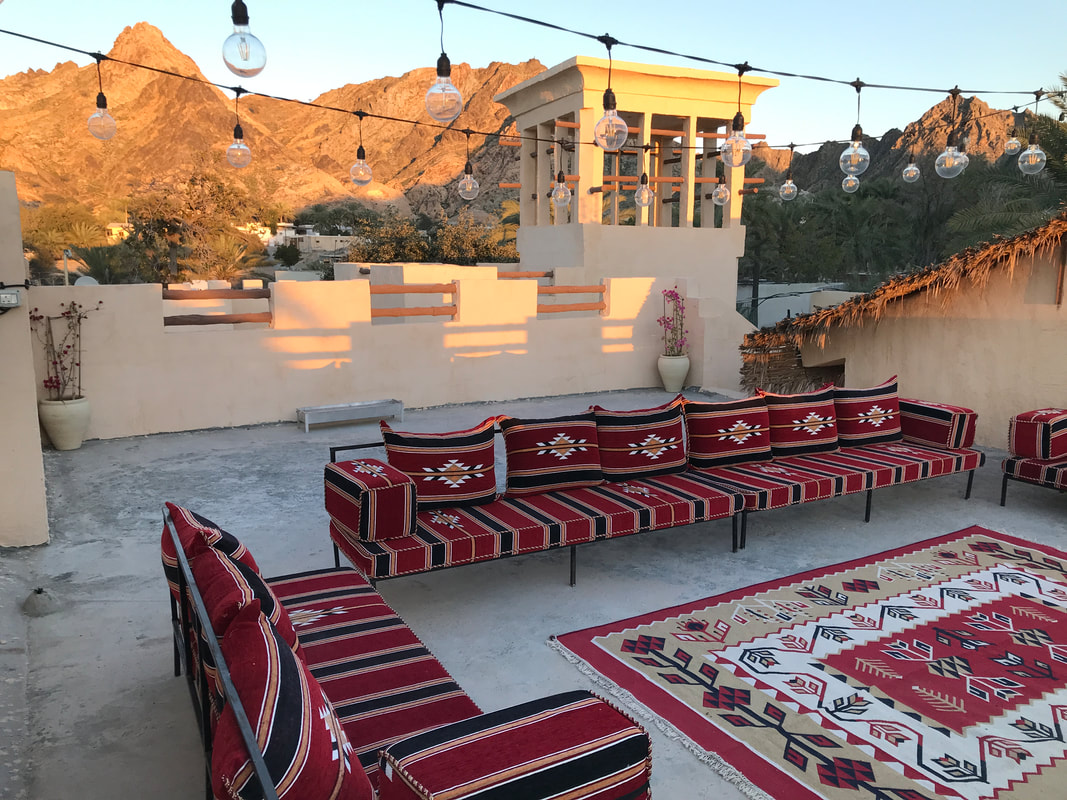
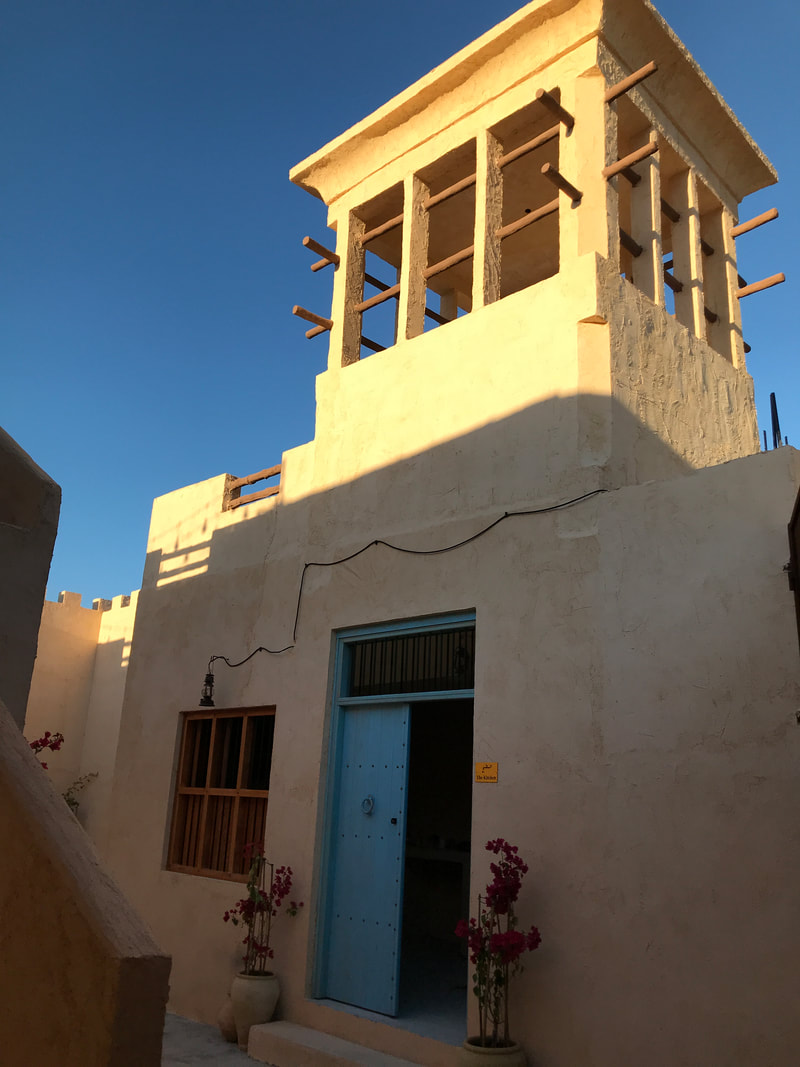
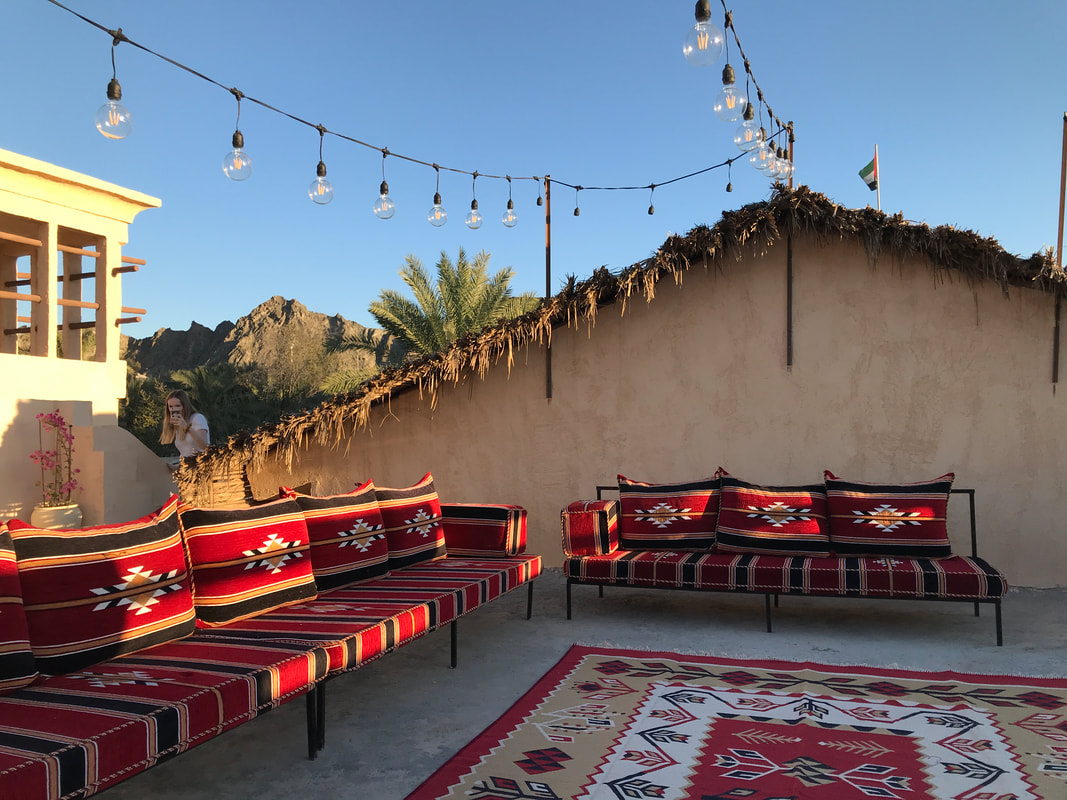
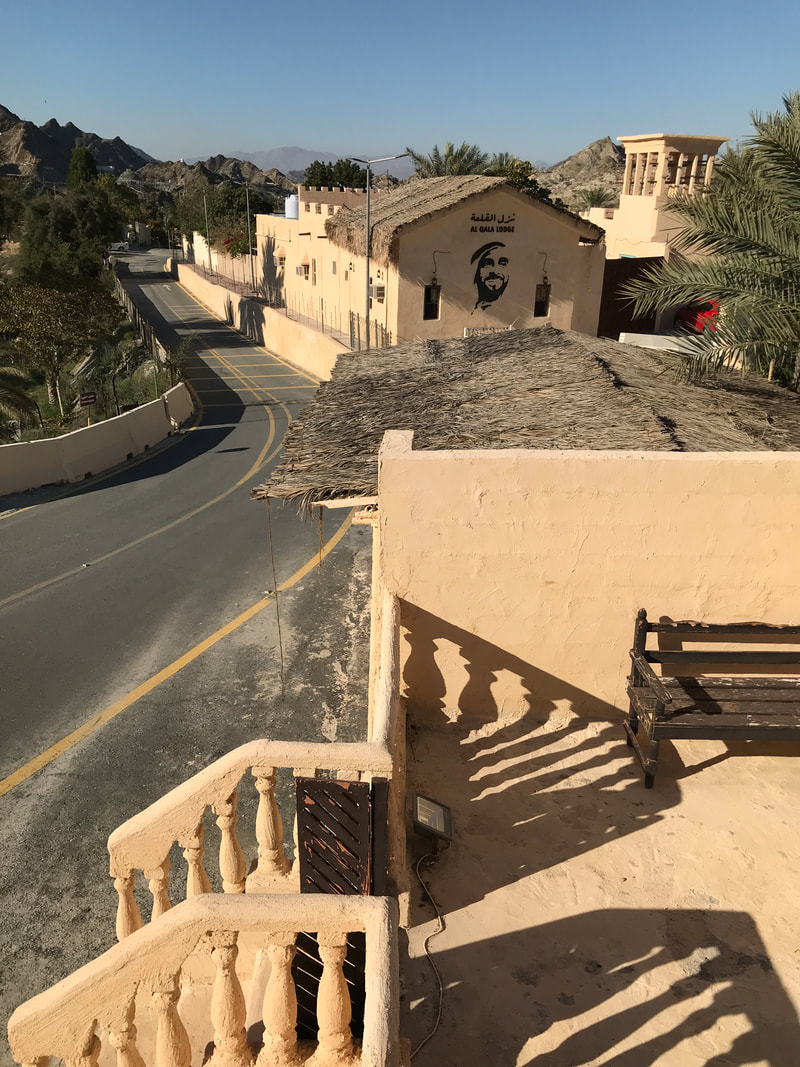
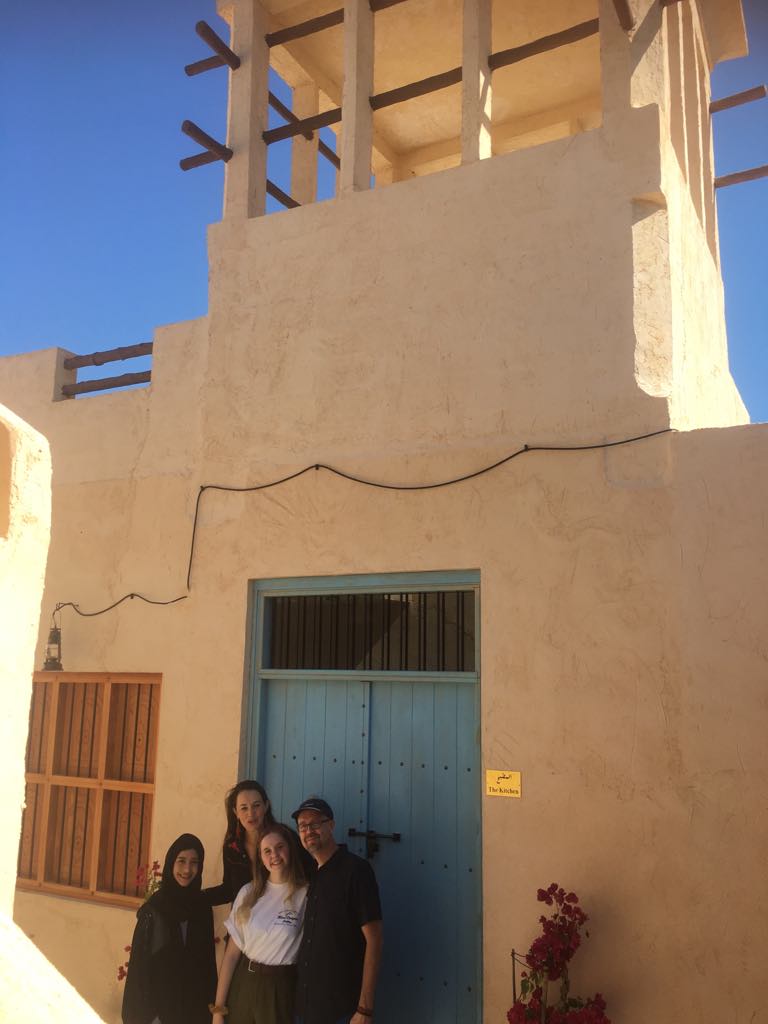
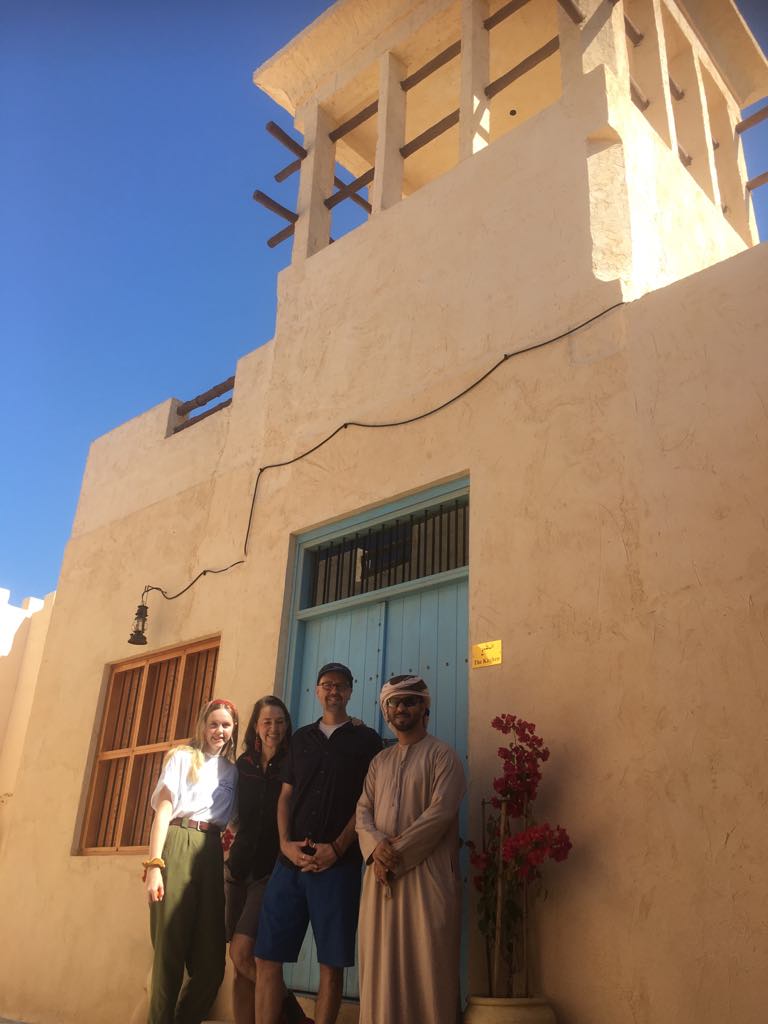
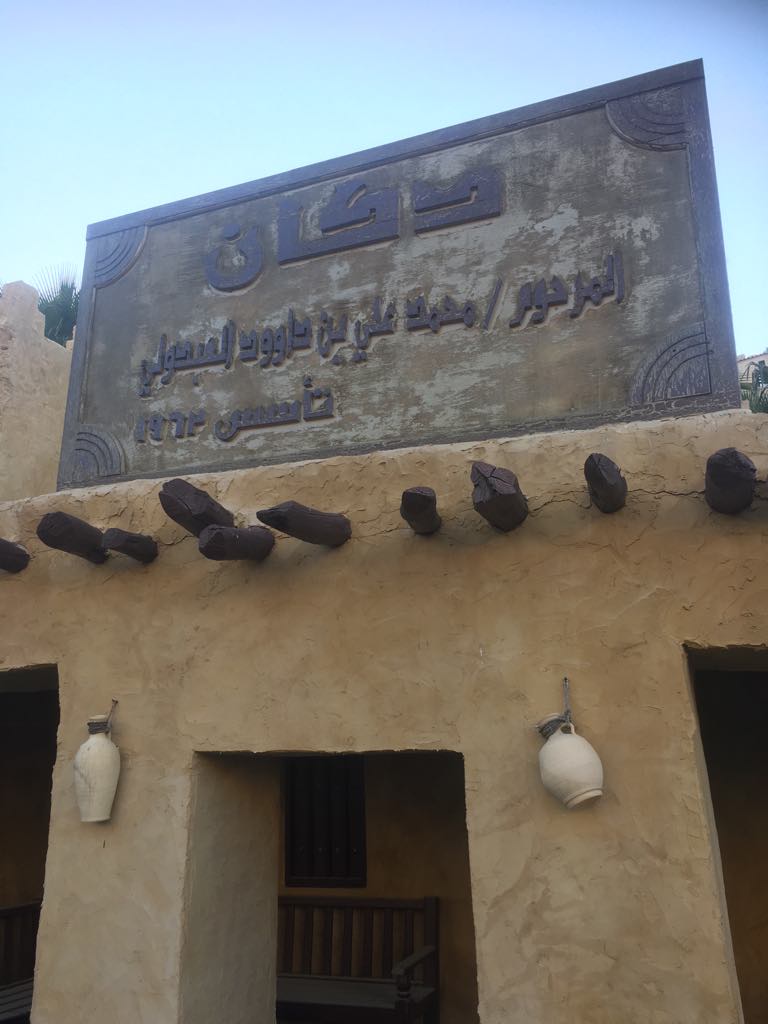
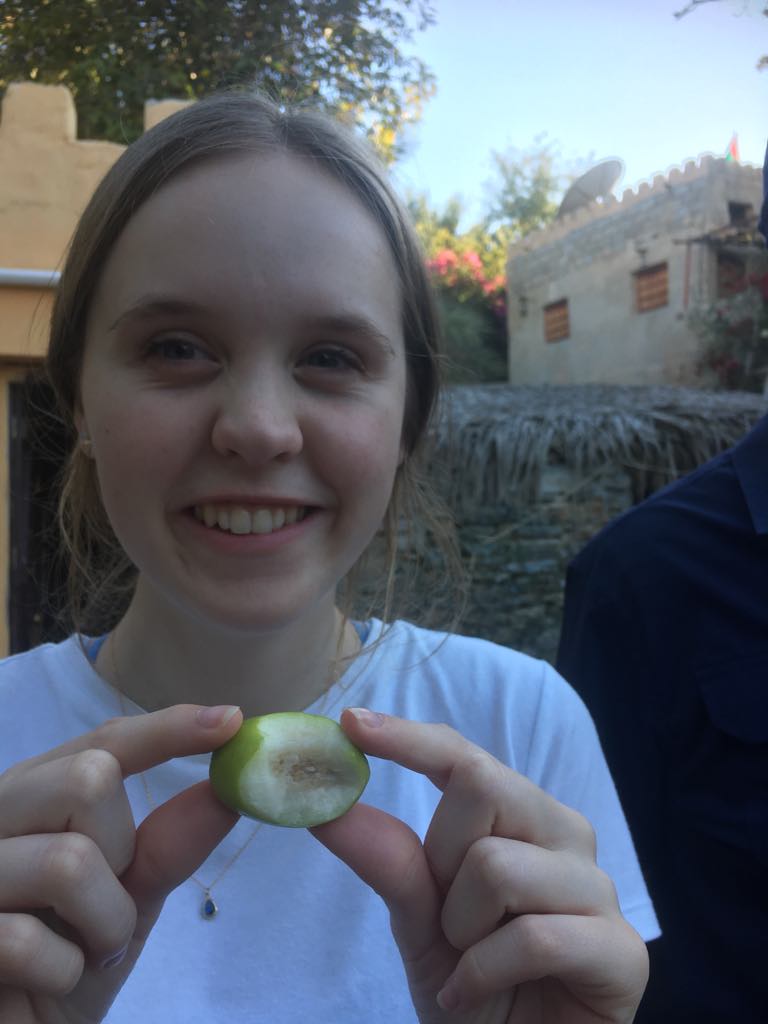
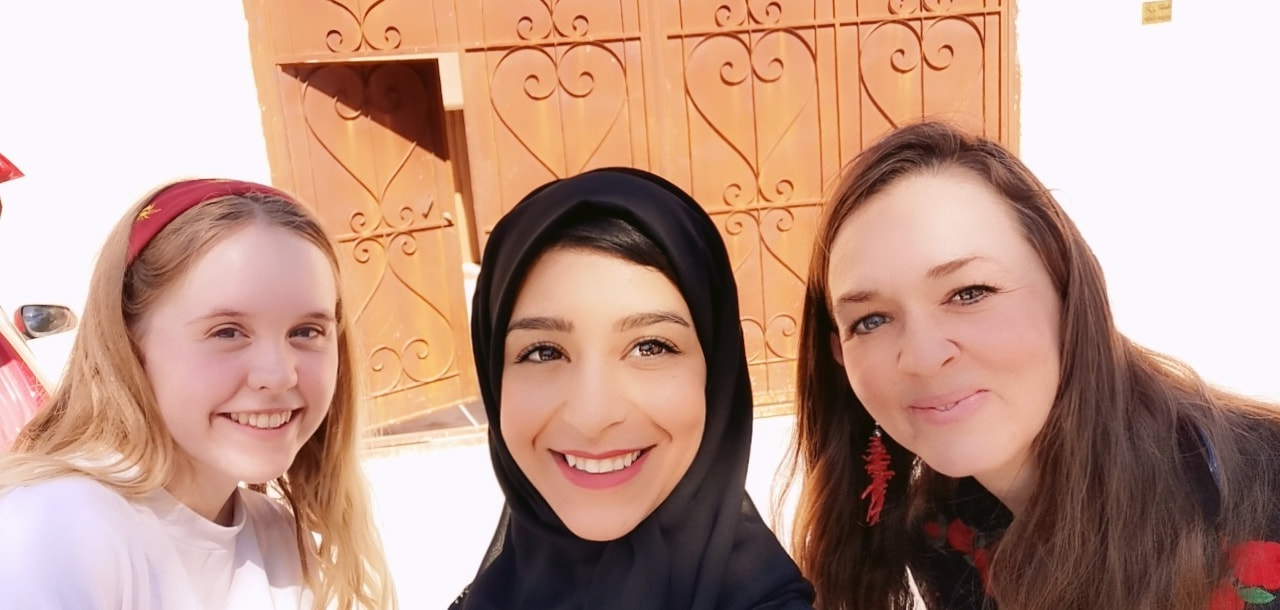
 RSS Feed
RSS Feed
